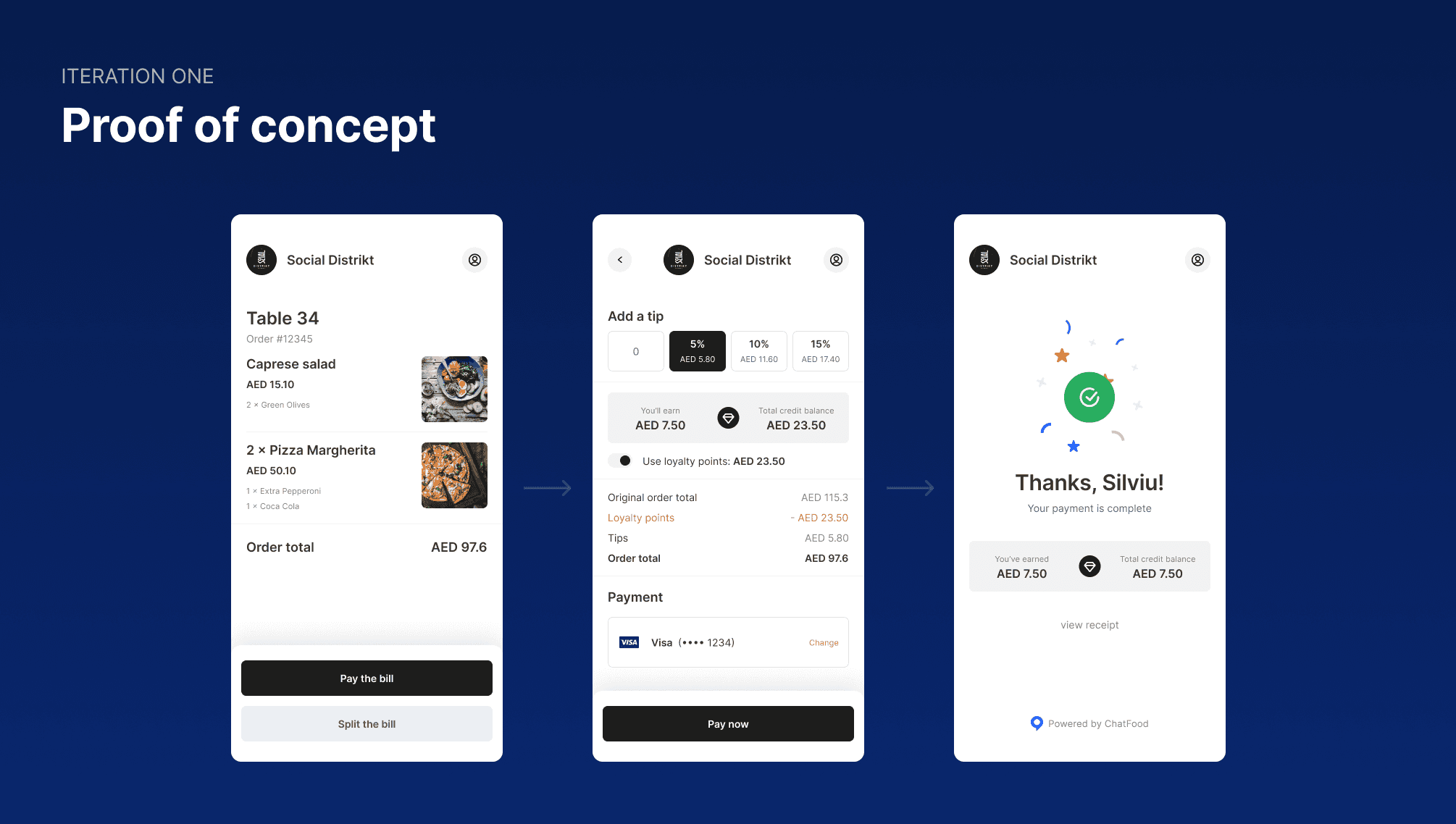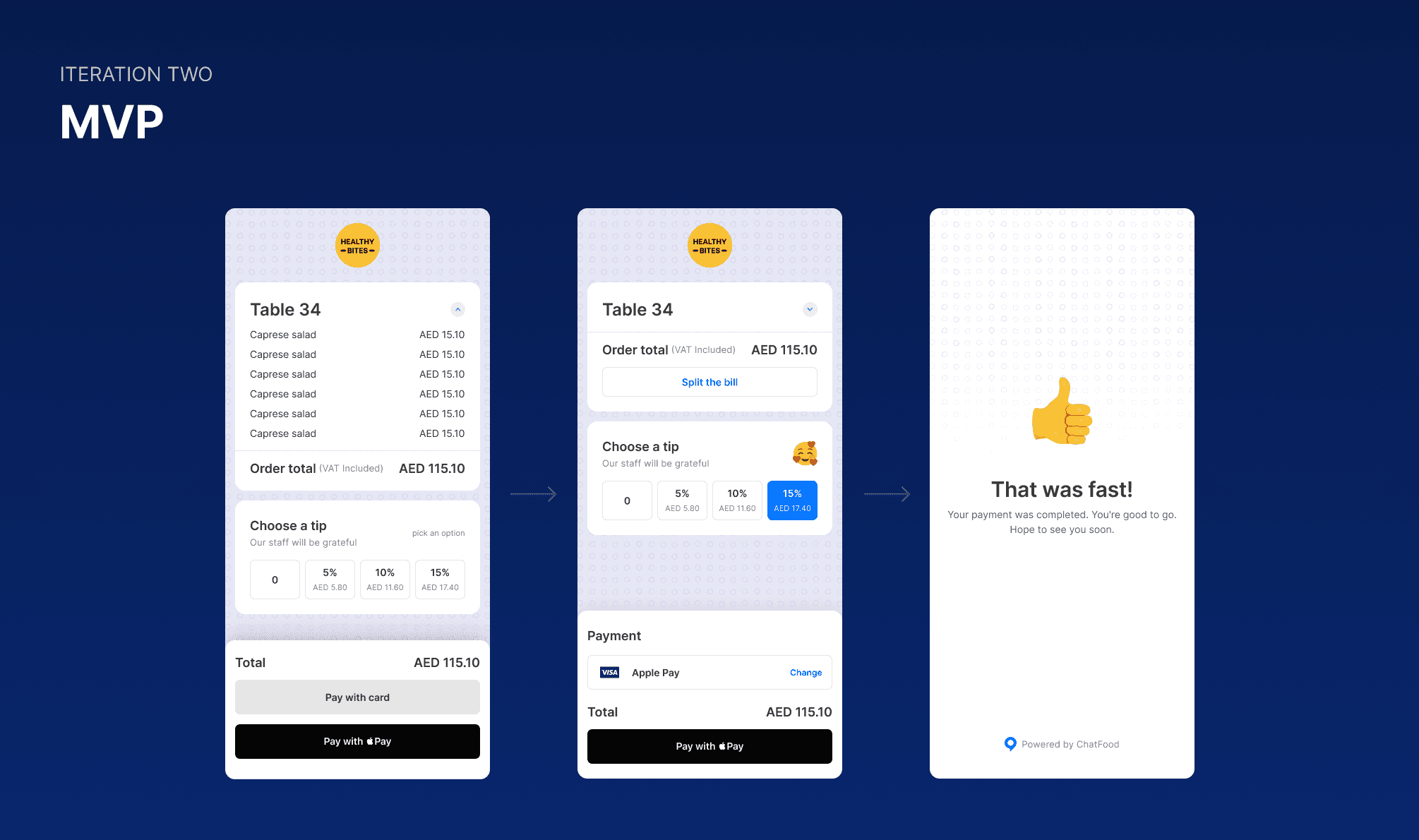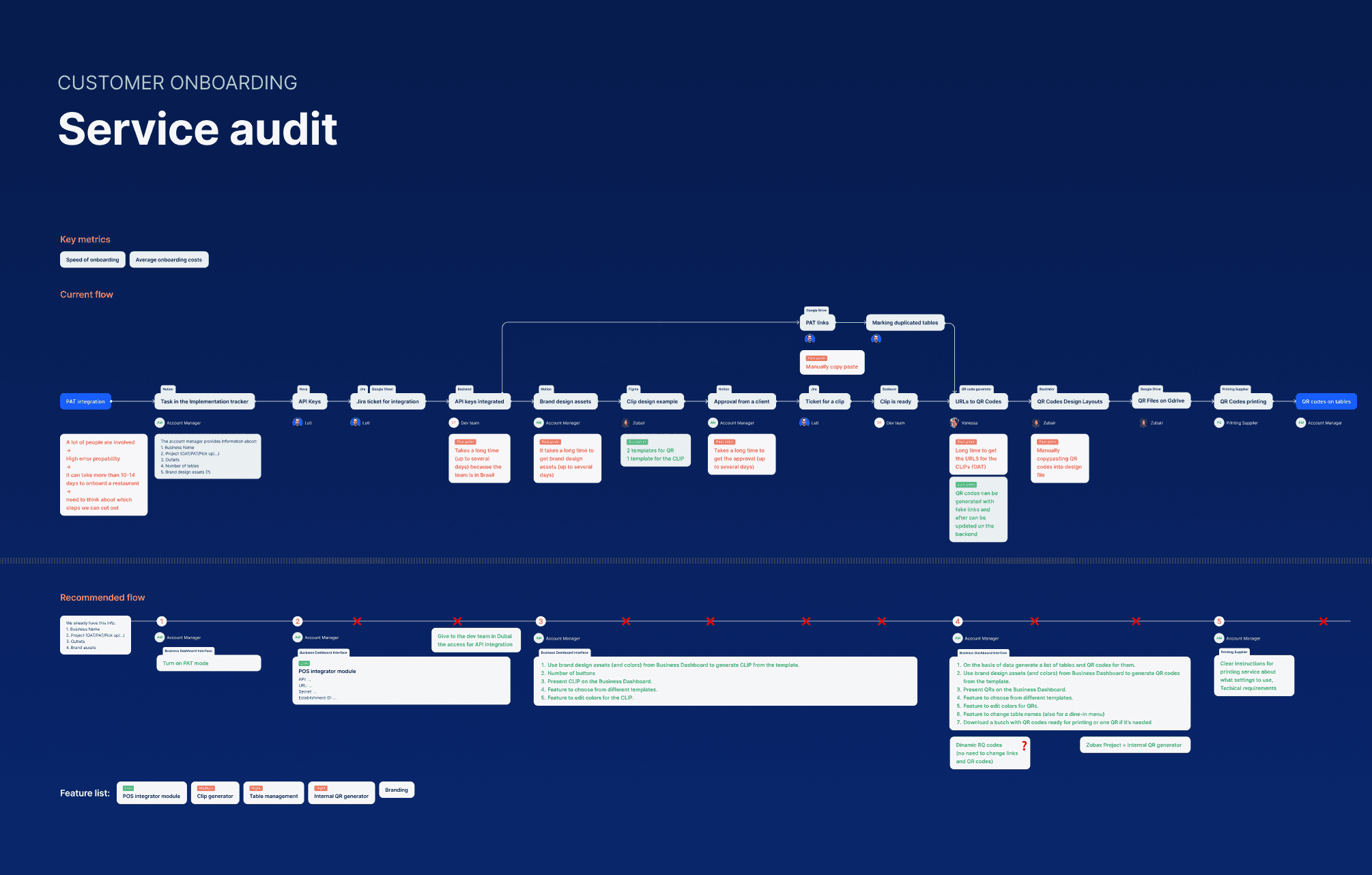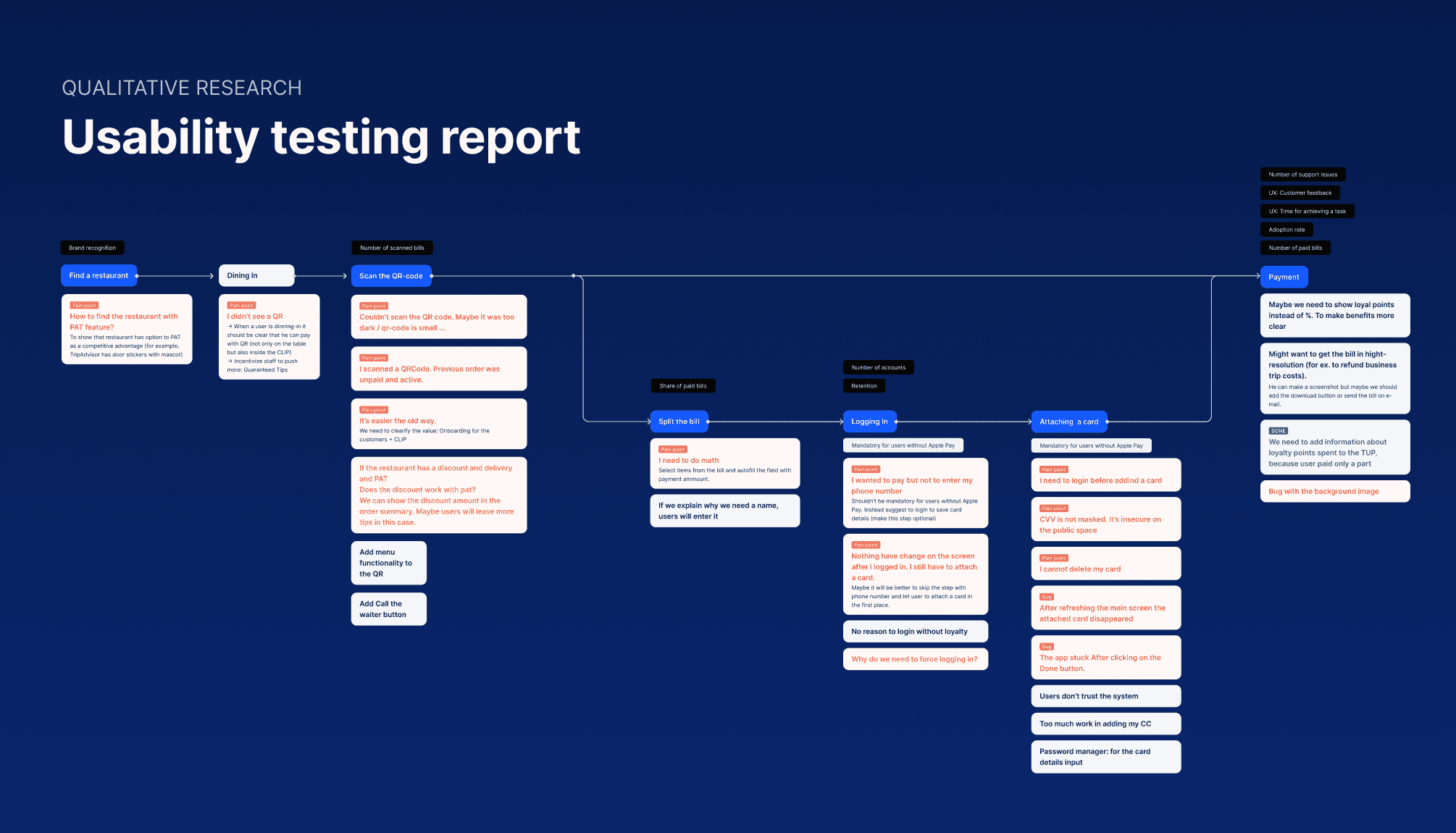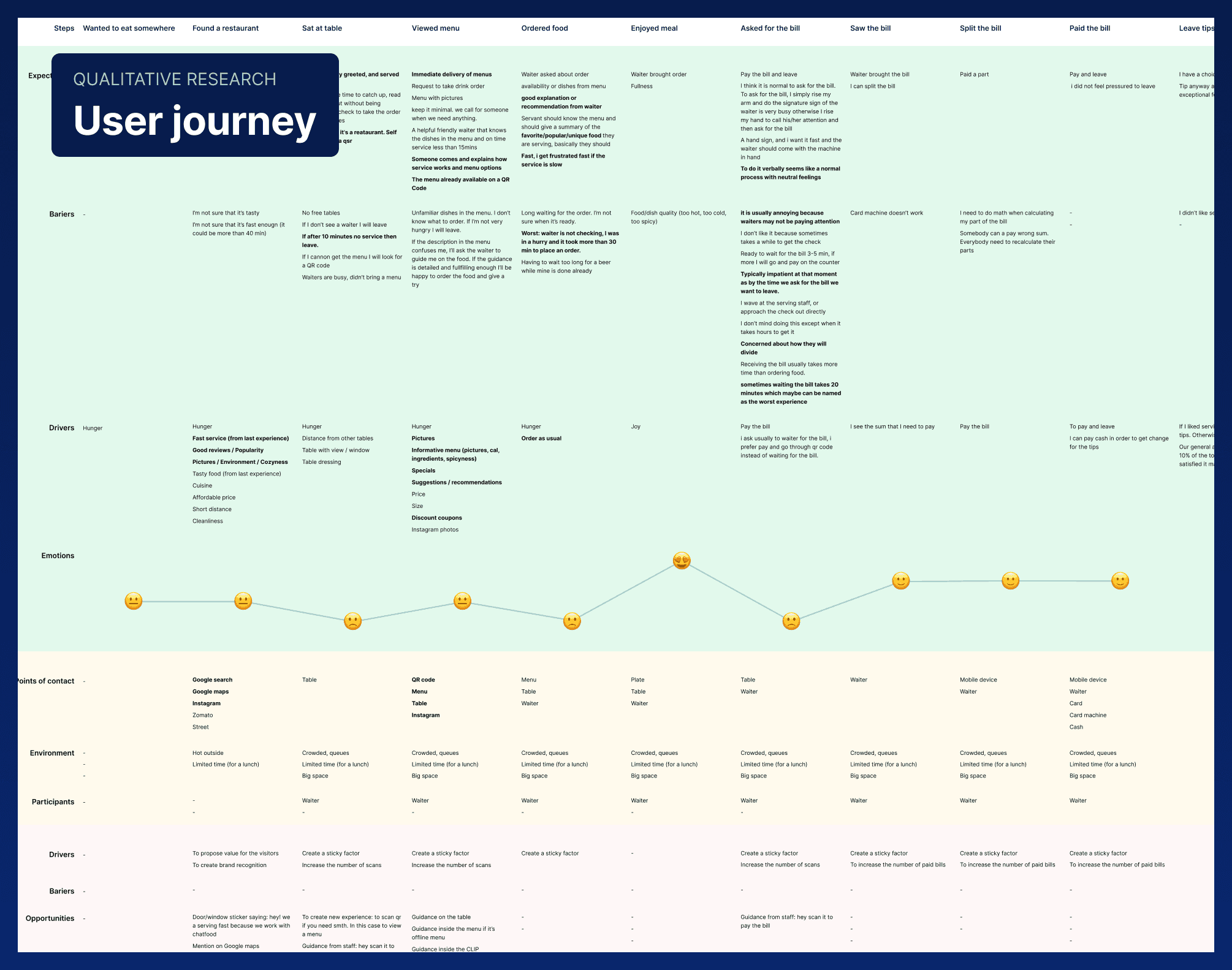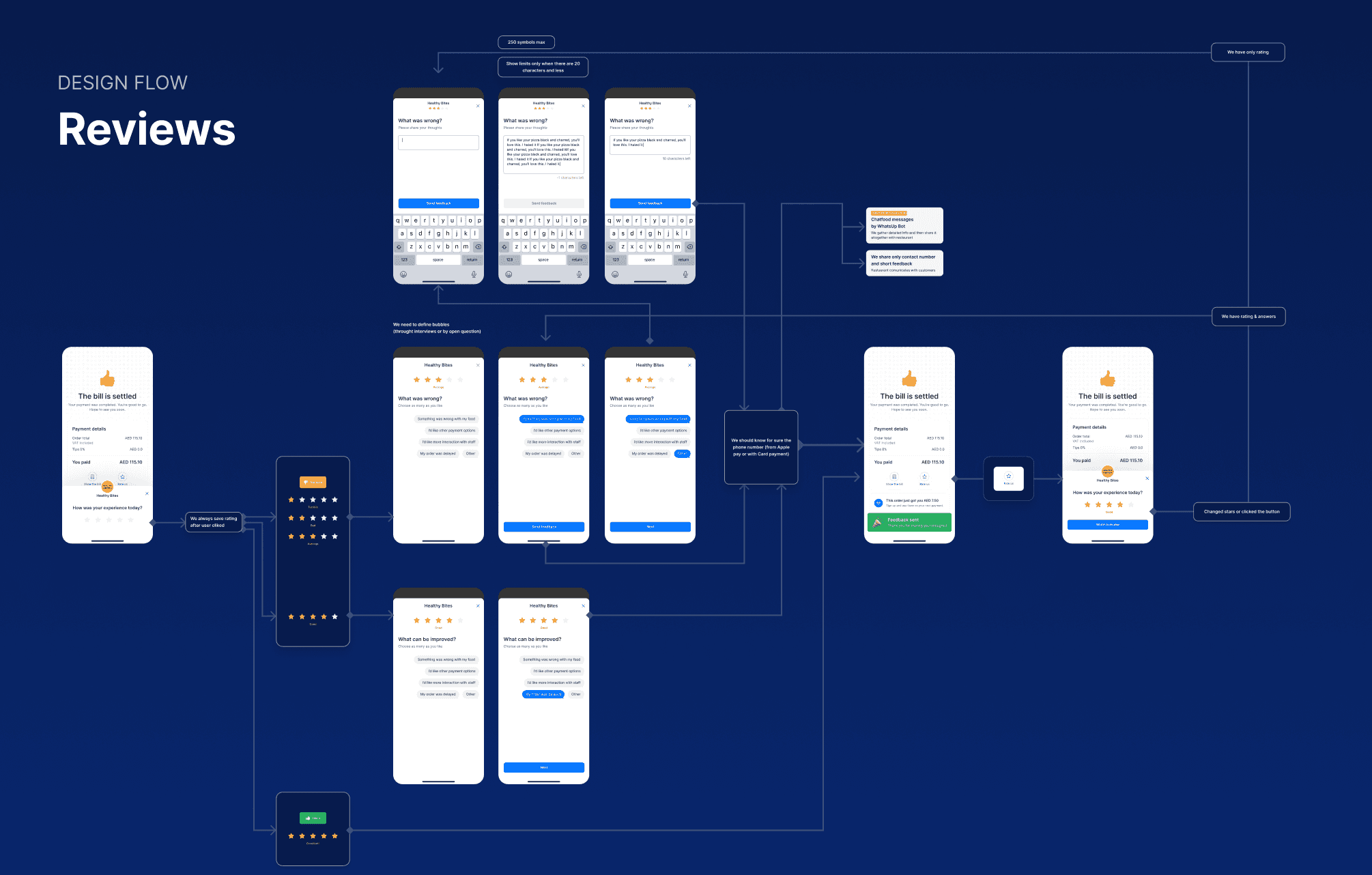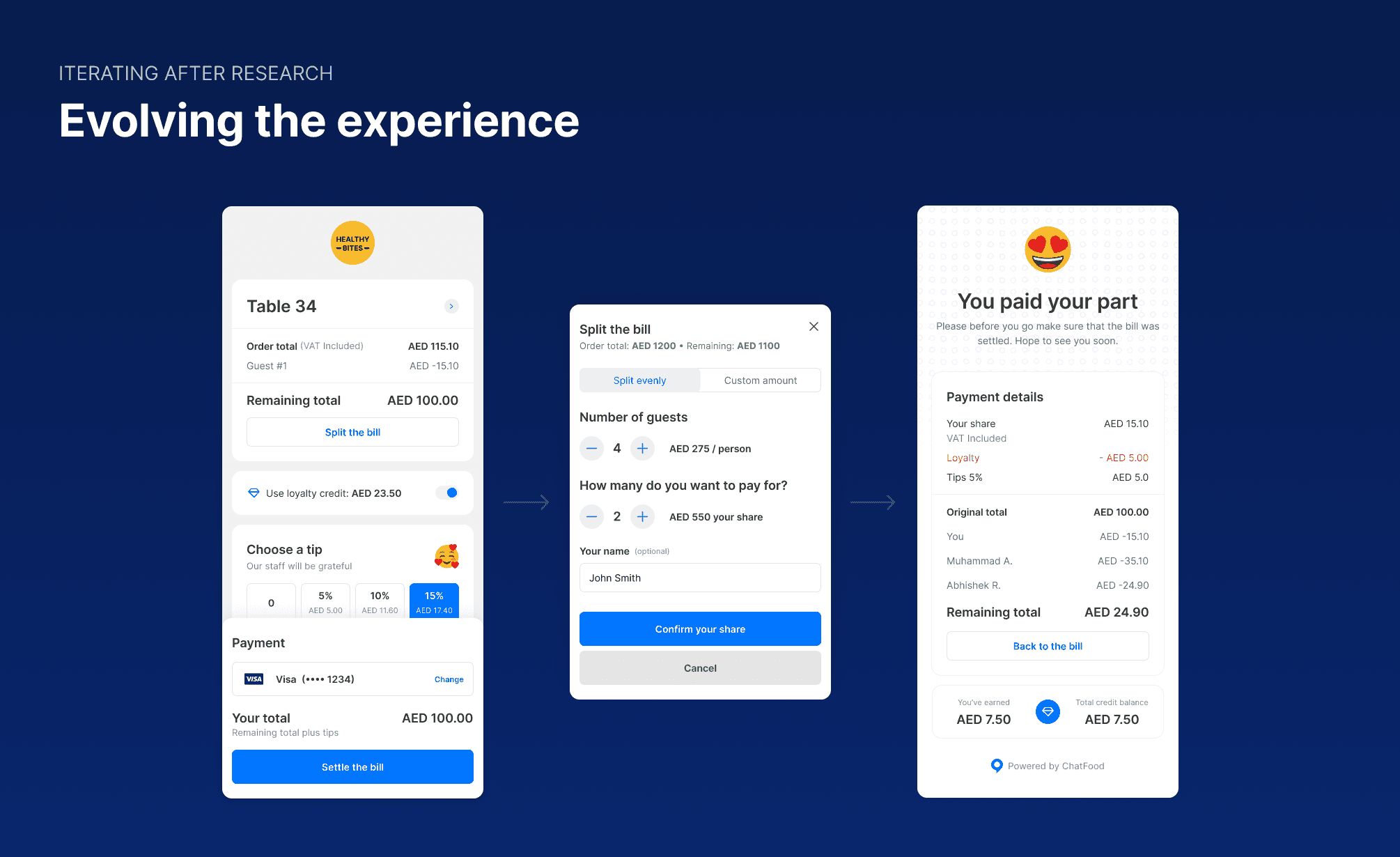ChatFood Pay at Table
The best way to pay in your restaurant
ChatFood Pay at Table is an integrated solution built for restaurants, bars, pubs, cafés and hotels to seamlessly collect payments from customers. It's integrated with their existing point of sale system, thus taking the pressure off staff and lets them focus on providing excellent service instead of running around with card machines.
So, if you ever felt frustrated by waiting too long to ask for and settle your bill or had issues splitting that bill with your table mates, Chatfood Pay at Table is fast & an easy way out of those situations.
The challenge
ChatFood had a robust and growing online ordering delivery system that was beloved by hundreds of brands and millions of customers. We wanted to expand our footprint in the offline dining space and offer a complete experience to hospitality venues.
The fastest way to get into the space is to work with a very limited scope and go to market as soon as possible. Pay at Table was our bet for that. Read more about the overall offline ordering strategy in my ChatFood Dine In Case Study.
Our immediate objectives were:
- Offer a QR code based payment solution.
- Integrate with the existing venue operations and point of sale.
- Leverage the account ecosystem we've built: saved payment methods, loyalty programs and payout infrastructure.
My role
As Head of Product Design, I’ve taken the lead design role of ChatFood Pay at Table from the release, in January 2022, and throughout its pilot stage.
From March 2022, research and design was handed over to a Senior Product Designer under my supervision.
I decided stop allocating resources to this product in June 2022 and roll the functionality and learnings in the main product, ChatFood Dine In.
The pilot
After we’ve spun up a proof of concept (See Fig. 1), we’ve partnered with a couple restaurants we could pilot the product with: Vietnames Foodies, Kaak al Manara.
The first version was launched in 4 weeks time, on 19th January 2022, and had very basic functionality: a customer could scan a QR code, the app would bring the bill from the POS, the customer could then pay the bill with their card or with Apple Pay.
CX and Service Design
After our hastily launch, we started gathering data and insights to help us inform and prioritize a roadmap.
We started to do a full end-to-end service design and customer experience analysis: how do we onboard and support our partners, how the staff is trained and their operational experience, and how the customers interact with the product.
After a few rounds of research, including customer journeys (Fig. 5), usability testing (Fig. 4) and questionnaires, I split the issues found into 3 different categories:
Category 1: Operational issues
- Waiting staff had issues in using our bill management system and thus avoided recommending the solution to customers.
- The POS integrations were brittle and did not support a lot of necessary functionality or had massive sync delays.
- Creating, managing and printing the table signage was a multi-person multi-week effort that delayed the onboarding of the partner and massively affected the experience.
Category 2: Product adoption issues
- People didn’t see the table signage and waiter reluctance to point them out didn’t help either.
- If they did know about it, they didn’t perceive enough value to change their behavior.
- If they were not a previous ChatFood customer, they had a reluctance to add their card on an online application for both time and security reasons.
Category 3: Functionality issues
- People wanted to not have to do math when spliting the bill.
- If there were discounts available, they needed to be automatically applied to the bill.
- Sometimes the bill was not up to date; the POS syncing was becoming a frustration point.
Measuring success
After the main issues and categories were identified, we’ve put in place 3 initial success metrics to make sure our improvements set us on the right path.
- Conversion rate: Successful payments / Scanned QR codes
- Time on task: QR Scan → Successful payment
- Adoption rate: Payments through Pay at Table / Total restaurant bill volume
Later, we’ve added a fourth one: Staff CSAT. As we've found out the critical importance of waiters in the process, we made sure their experience was on our radar.
Improving the product and growing the functionality
In the subsequent months after the pilot release, we’ve iterated on the experience and we’ve launched improvements on common frustrations and missing features. They include:
- Added a smarter split the bill functionality.
- Offered and proved venue operational improvements though reviews collection. We got to almost 40% conversion of people who payed and also left a review.
- Made improvements on tipping that brought restaurants like 1762 from 2% (before implementing ChatFood Dine In) to 17% and eventually 36% of tipping ratio (Fig. 7).
- We've built more robust POS integrations including syncing with POSs like Revel and Tevalis. While the engineering team worked hard at this, I don't think we've really achieved the level of reliability and speed we hoped for.
End of the road
In June 2022, I arrived at the conclusion that it was more useful for the Product team to focus our resources on the full dine in experience and our newly cemented Product Vision. Thus, the product has reached its full life.
While we’ve suspended further development, I still consider it a success. A plethora of learnings and functionality made it into our main product, including but not limited to:
- We remained with a robust tipping system and the CSAT for staff
- Reviews system
- Usability on payments, data capture and overall bill comprehension
- A robust table management system and QR code generation
